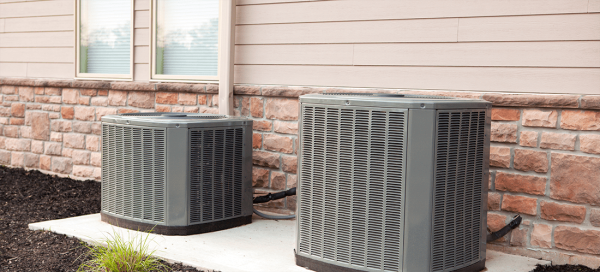If you own a home in the great state of Texas, you should do everything possible to protect your home. While having homeowners insurance is a good start, insurance typically only applies damage to your house or property. If something inside your home, such as a refrigerator or television, gets damaged, insurance won't be able to help you.
The only thing that can help cover the costs of damaged appliances and other necessities in your home is a home protection plan. Home protection plans, while similar to homeowners insurance, cover different parts of your home than insurance does. They're also provided by different companies and entities than insurance companies.
If you're curious and want to know more about home protection plans in Texas, you've come to the right place. This article will delve deeper into these types of plans, why they're so important, and how they work. Finally, we'll examine how to choose the best home protection plan in Texas and who offers it.
What Exactly is a Protection Plan for Your House?
As the name indicates, a home protection plan is designed to help protect various parts of your home. Unlike insurance, they don't cover general property, foundation, or structural damage. Instead, home protection plans cover appliances and systems in your home that give out or get damaged due to wear and tear, unexpected issues, and various other reasons. Home protection plans, also known as home warranties, are one of the best ways to protect parts of your home. As your home gets older, many of the appliances and components in your home will age along with it. Unfortunately, many of these appliances and components have a shorter lifespan than your house and will start giving out much sooner. The only way to avoid paying to replace or repair each appliance is if a home protection plan covers them.
What is the Purpose of a Home Protection Plan?
Unlike home security plans, the goal of any home protection plan is to provide compensation in the event that one or more of your appliances gives out. Paying for these repairs and replacements can add up fast, and it's easy to dig yourself into a hole if you don't have a home protection plan.
What Does a Home Protection Plan Cover?
There are many different types of home protection plans that cover many different things. For instance, some plans will only cover damage due to natural wear and tear. These plans may not cover issues related to accidents, flood damage, or damage that stems from something you did.
A quality home protection plan, however, should be highly comprehensive. This means that it will cover the following things.
Repairs
Occasionally, one of your systems might break down, but repairing it makes more sense than replacing it. Take your air conditioner, for example. It has many working components and parts, and some will last longer than others. Therefore, if a single part gives out, your home protection plan might pay to repair or replace the single element rather than paying for a full-on replacement.
Service
Companies offering home protection plans understand that regular maintenance and service are the best way to prevent expensive repairs and replacements. Therefore, some plans will pay for annual or semi-annual service to various appliances in the hopes that it prolongs the lifespan of those appliances.
Replacement
Finally, any home protection plan worth its' salt should cover the replacement of essential appliances. Once again, coverage will vary from provider to provider, but all plans should cover replacements due to wear and tear, accidents, or other extenuating circumstances.
What Appliances and Systems Do Home Protection Plans Cover
Once again, the specific appliances and systems a home protection plan covers will vary from plan to plan. In general, however, here are some components that every home protection plan should assist you with.
Air conditioner
Furnace
Water heater
Water softener
Faucets
Water lines
Drains
Sewer lines
Gas lines
Heaters
Sump pumps
Garbage disposals
Dishwashers
Refrigerators
Washer
Dryer
Stove
Oven
Range hood
Garage door opener
Trash Compactor
HVAC system
Plumbing system
Electrical system
Septic tanks
Well tanks
Swimming pools
Much more
A home protection plan usually covers any appliance not covered by your homeowners' insurance. However, there are many different types of plans, and some will only cover a specific system or component, so it's essential to understand the exact coverage of your plan.
Additionally, if, for example, your refrigerator is still covered by a manufacturer warranty, it may void coverage from the home protection plan. You can't have double coverage on something, so it's important to understand how your home protection plan works and its terms and conditions.
How Do Home Protection Plans Work?
While home protection plans are a relatively simple concept, how they work and operate is an entirely different story. Because there are so many kinds of protection plans that cover many different things, understanding how they work is challenging but important. In general, here's what to expect.
You can purchase a home protection plan when buying a house or after the fact.
Once you purchase your plan, coverage usually starts after a 30-day waiting period.
You can choose from many different types of plans depending on the coverage you need.
When a component or appliance covered by your protection plan breaks down, you file a claim with your home protection company.
A technician from a nearby service company will come to your home, evaluate the damage, and determine whether or not your plan covers it.
The technician will then recommend whether you should repair or replace the damaged component and determine the best course of action.
If the issue is covered by your home protection plan, you may need to pay a deductible, but the remainder of your cost is covered by the plan.
Once again, it's vital to understand exactly how your specific home protection plan works. Every plan has different terms, coverage options, and parameters, and understanding your specific plan is crucial.
How are Home Protection Plans Different from Insurance?
By now, you probably think that home protection plans sound nearly identical to homeowners insurance. To be fair, you're partially correct if you have that opinion. Protection plans and insurance are very similar in how they operate because they both cover part or all of the cost of certain repairs and replacements.
However, protection plans and insurance differ because of what they cover and why they cover them. For instance:
Protection plans cover appliances, systems, and components in and around your home.
Insurance covers damage to your home itself.
Protection plans usually cover damage related to wear and tear or natural aging.
Insurance covers damage related to a wide range of issues.
Where homeowner's insurance and protection plans are similar is that neither of them covers pre-existing damage. In other words, you can't ruin something, purchase a protection plan or insurance, then hope the plan will pay for repairs.
Different Types of Home Protection Plans
Now that you have a better idea of what home protection plans are and how they work, let's look at some of the different types of plans and what they cover.
Surge Protection Plan
A surge protection plan is a type of home protection plan that covers damage related to your electrical system. Due to the high heat and energy demand in Texas, power surges are very common during the summer months. A power surge can damage electronics, appliances, and various parts of your electrical system. Unless you have a surge protection plan, you'll be responsible for paying for these repairs and replacements out of your pocket.
HVAC Protection Plan
An HVAC protection plan is the best option if you're mainly worried about your air conditioner, heat pump, furnace, ducts, and HVAC system. This type of plan covers damage to all your heating and cooling appliances and ductwork repair or replacement. Some HVAC protection plans will also pay for annual service or maintenance for your system.
Plumbing Protection Plan
Next, you have the option of choosing a plumbing protection plan. A plumbing protection plan covers repairs, maintenance, and replacement for various components in your plumbing system. Depending on the terms and conditions of your specific plan, this could include water lines, drains, sewer pipes, faucets, gas lines, appliances, and more.
Comprehensive Protection Plans
If you're looking to bundle all of these plans together into one, you also have the option of choosing a comprehensive protection plan. Comprehensive protection plans offer the widest range of coverage, but they're also the most expensive. Additionally, comprehensive protection plans differ significantly in what they cover, so you'll have to take extra time reading and researching the terms of different plans.
Rhythm Energy is proud to offer some of the finest and most affordable HVAC, plumbing, and surge protection plans. We also offer combination plans that cover multiple systems. To date, however, we have yet to provide any comprehensive protection plans covering all three systems.
How to Choose the Best Home Protection Plan for Your Household
If you have determined that you could benefit from a home protection plan, let's look at how to choose the right one.
Budget
As with homeowners insurance, health insurance, and other forms of coverage, home protection plans aren't free. They vary almost as much in price as they do in the things they cover. In general, however, the more comprehensive and generous your plan is, the more expensive it will be.
Coverage Needs
The second consideration when choosing a home protection plan is determining how much coverage you need. If you're more concerned about one system over another, then you should select the corresponding protection plan. If you have an older home and it's only a matter of time before multiple systems break down, you should consider the most comprehensive protection plan you can find and afford.
Company Offering the Plan
Finally, it's important to consider the company offering the protection plan. As with insurance providers, some companies have a reputation for being very generous and comprehensive with their coverage.
Other companies, however, have a reputation for finding any little reason to avoid covering damaged items. Therefore, you should carefully research prospective companies and read reviews from other customers before making your final decision.
Method of Signing Up
While there are many different types of home protection plans covering a wide range of items, you generally have two signup options. First, you can find a home protection plan directly through the offering company. Your second option is to choose a plan from a Texas energy provider that offers home protection plans as a discounted perk when you choose one of their electricity plans.
Who to Turn to for the Best Electricity and Home Protection Plans in Texas
If you want the best home protection plan, why not sign up for it through the best energy company in Texas? Rhythm Energy provides some of the best renewable energy electricity plans in the state, as well as several high-quality home protection plans. These plans cover everything from your plumbing system to your electrical system and even your HVAC system. It's entirely up to you which protection and energy plan you prefer, and Rhythm will be more than happy to accommodate.




